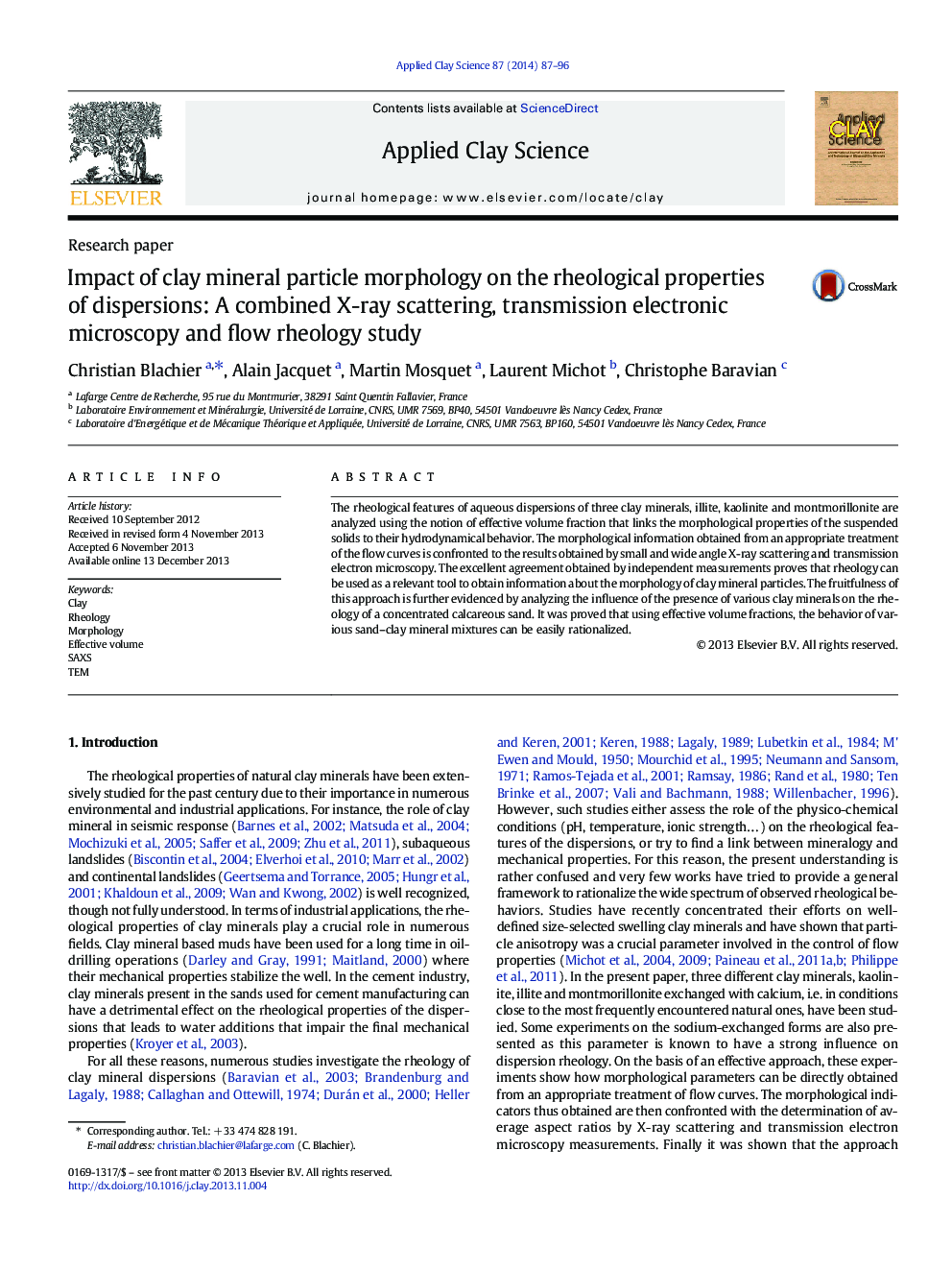| Article ID | Journal | Published Year | Pages | File Type |
|---|---|---|---|---|
| 1694952 | Applied Clay Science | 2014 | 10 Pages |
•TEM and SAXS provide access to the morphology of clay mineral particle.•Particle anisotropy is a key parameter to understand the rheology of dispersions.•The concept of effective volume fraction links shape to hydrodynamics behavior.
The rheological features of aqueous dispersions of three clay minerals, illite, kaolinite and montmorillonite are analyzed using the notion of effective volume fraction that links the morphological properties of the suspended solids to their hydrodynamical behavior. The morphological information obtained from an appropriate treatment of the flow curves is confronted to the results obtained by small and wide angle X-ray scattering and transmission electron microscopy. The excellent agreement obtained by independent measurements proves that rheology can be used as a relevant tool to obtain information about the morphology of clay mineral particles. The fruitfulness of this approach is further evidenced by analyzing the influence of the presence of various clay minerals on the rheology of a concentrated calcareous sand. It was proved that using effective volume fractions, the behavior of various sand–clay mineral mixtures can be easily rationalized.
Graphical abstractFigure optionsDownload full-size imageDownload as PowerPoint slide
